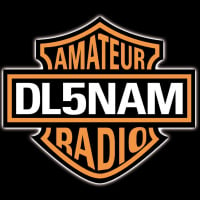Welcome to the FlexRadio Community! Please review the new Community Rules and other important new Community information on the Message Board.
Need the latest SmartSDR or 4O3A Genius Product Software?
SmartSDR v4.1.3 | SmartSDR v4.1.3 Release Notes
SmartSDR v3.10.15 | SmartSDR v3.10.15 Release Notes
The latest 4O3A Genius Product Software and Firmware
SmartSDR v4.1.3 | SmartSDR v4.1.3 Release Notes
SmartSDR v3.10.15 | SmartSDR v3.10.15 Release Notes
The latest 4O3A Genius Product Software and Firmware
If you are having a problem, please refer to the product documentation or check the Help Center for known solutions.
Need technical support from FlexRadio? It's as simple as Creating a HelpDesk ticket.
Need technical support from FlexRadio? It's as simple as Creating a HelpDesk ticket.
How much Output Power out of Power Genius XL Amp with 110VAC versus 220VAC input
Answers
-
If one could get 208 3 phase the AC to DC conversion would be really smooth so the caps wouldn't have. Realizing this is a switching supply it would seem 3phase would make the supply happy.0
-
If you are thinking of the 1K80 as a higher power drop in replacement of other LDMOS chips you are missing the point of these chips. By many miles. The 1K80 opens up huge design opportunities because of the higher drain voltage. 65V is ideal to have two chips in a push-pull design, without a combiner, with a totally linear output transformer from 1.8 to 60 MHz. None of the current LDMOS chips offer such flexibility. The solid state amps world is full of copycats repeating an old Motorola design from the last century.0
-
Like to know more about the 65V supply
Is it Mil Spec for your Airplane?
73 Mike 0
0 -
At a bit over $800 the power supply is the single most expensive part of our design. For most applications a PSU like this one will be plenty: http://s.aliexpress.com/mEf63uuu Assuming 60% efficiency you should be able to deliver about 2400W out. That is, the amp would have plenty of headroom to do RTTY at legal power all weekend long. The key, again, is redesigning the output transformer and the RF deck to take full advantage of the higher drain voltage. The century old EB104 board and the NXP reference designs are poor choices for the 1K80. If you look at what people are doing with the current LDMOS chips, they all show a drop of power at about 15 MHz. The standard answer is that this is a "feature" of the chip and the chip is not intended for Ham use. This all goes away with a properly designed output transformer and you get a beautifully flat Pout curve at full power from 1.8 to 60 MHz.0
-
@N2WQ Are you going to make your design public? Peter K1PGV0
-
The 1.8 kw chips I believe are going to be used in high end microwave ovens. I saw an article somewhere, I think it was EE times. They can modulate it and do things like beamforming without having a mechanical turntable. It's so good they can boil an egg without water and without it exploring. I'm just looking forward to defrosting meatballs without a steaming outside and ice on the inside
 0
0 -
The short answer is that most likely not. Our goal is to transition my friend's existing line of GU74-based amps to solid state. The long answer is that we are not doing anything super secret. It is basic application of Ohm's law, experience designing broadband matching networks, and baseline amp design experience.0
-
@n2wq
Yes, your right, simply paralleling of two 1K80's devices with package parasitics Cout on the Drain will cause the dip for the proper RLopt Load Line >15MHz.
Using a transformer removes this issue by looking at the One Port Large Signal model, helps in wider BW ( Fano's Limit )
The downside is that %PAE takes a hit with a transformer but the upside is
better Bandwidth, so it's a tradeoff in SSPA design and as well as $$ cost.
The Optimum RLopt on the output for a Class AB amp is DCIV Delta Delta Vds/Delta Delta Ids and Cout, from there the package parasitics need to taken into account with
3D EM Solver like HFSS CAD Simulator unless you have actual Load Pull Data from a Load Pull Tuner.
Load Pull Systems to see the affects of Fundamental and Harmonic terminations
are important in the design approach for a more refined approach in SSPA
design
Harmonic terminations will affect %PAE and level of the Imd's ( 3rd, 5th, products's) as you reach P1dB and into saturation
A bad RLopt, will cause the ellipse of the Load Line to shift (Circle across the DCIV plane** ) due to Cdrain effects also to cause lower Pout, higher gate currents, etc.
( ** RF swing across the Delta Vds and Delta Ids swings from the ideal DCIV
curves of ( Pulsed DCIV on device to prevent sag in DCIV curves and Non-Linear Model Characterization) the 1K80 device )).0 -
>The long answer is that we are not
>doing anything super secret. It is basic
>application of Ohm's law, experience designing
>broadband matching networks, and baseline
>amp design experience.
LOL. Yes, of course. That's the definition of what's required to build any PA, really. There's an awful lot that's contained in that "experience" thingy, though.
I was just thinking that the ham community could benefit from a fully-formed, well considered, reference design for such a cutting edge amp.
Peter
K1PGV
0 -
PA design is more than Ohm's Law
LOL
Mike
PA designer0 -
Honestly, I am surprised that so much attention is being paid to power and SWR ratings than to T/R delay time, especially in SO2R mode. The issue is that in SO2R mode you cannot select the proper band for the LPF prior to PTT from the radio (you don't know which radio will "ask" to TX). So the issue becomes how quickly can the controller determine the proper LPF band selection. 6-10 ms for the relay. Maybe 10-20 ms for the controller? How about the broadcast packets? It quickly adds up.1
-
Prior to embarking on this journey I had zero amp knowledge despite my formal engineering degree. Working with someone who's been designing, building, and selling PAs has been an amazing experience. At the same time, it's been fascinating to discover how much inertia there is in the SS space. I ask questions for a living and applying that background to amp design has taken us to many unexpected answers and solutions!0
-
Or get one of these, so you can plug in two amps at once! http://www.homedepot.com/p/Leviton-20-Amp-Decora-Plus-Commercial-Grade-Self-Grounding-Duplex-Receptacle-White-16462-W/301361668?cm_mmc=Shopping|THD|G|0|G-VF-PLA-D27E-Electrical|&gclid=CNfd_tiu99QCFQtMDQodlQwMSA&gclsrc=aw.ds0
-
Or get one of these, so you can plug in two amps at once! http://www.homedepot.com/p/Leviton-20-Amp-Decora-Plus-Commercial-Grade-Self-Grounding-Duplex-Receptacle-White-16462-W/301361668?cm_mmc=Shopping|THD|G|0|G-VF-PLA-D27E-Electrical|&gclid=CNfd_tiu99QCFQtMDQodlQwMSA&gclsrc=aw.ds1
-
Maybe folks here hoped 1K80's could be simply dropped in place of the 1K50's with a
more hefty supply, but there will be tradeoffs to that !
@n2WQ ... A lot of great comments here
Mike
SSPA designer here at a big DOD company0 -
I have been learning so much about solid state PA design just from reading this stuff, and writings by others in various places. I am in the process of building my own (for VHF), and while I did learn "the basics" and have a MSEE, a lot of this is brand new to me. What is cool though is that I can apply my knowledge of software and systems to amp design and integration. Should be a fun ride.
Thanks for the technical posts. They are very enlightening.
1 -
I didn't think so! But from what I gather, the 1K50 can be used as a drop in replacement for other devices such as the BLF188XR, with only minor adjustments for bias? I was told that SPE replaced their 1.2kw devices in the 1.3K-FA with 1K50H, because of parts shortage of the 1.2kw devices.0
-
... we will do also :-)
1 -
I was planning to get a 2nd circuit installed here so I could EME while working HF, lol.
0 -
I must say, you guys have a really nice piece of kit with the B26-PA.0
-
As long as we're on the "power input" subject, what power input will the
antenna genius tuner require?
Ned, K1NJ
0 -
Michael, I have a few questions that I'd like to run by you. Any chance I can email you directly?0
-
Varistor,
wb6dji_dx@icloud(dot)com
Mike
0 -
I believe it could be powered from the coax and by the Power Genius XL. But a lot of this is TBD. I would imagine that it would be the same as any tuner - 13.8V DC at a few amps.0
Leave a Comment
Categories
- All Categories
- 382 Community Topics
- 2.1K New Ideas
- 632 The Flea Market
- 8.3K Software
- 123 SmartSDR+
- 6.4K SmartSDR for Windows
- 185 SmartSDR for Maestro and M models
- 430 SmartSDR for Mac
- 272 SmartSDR for iOS
- 259 SmartSDR CAT
- 195 DAX
- 382 SmartSDR API
- 9.3K Radios and Accessories
- 40 Aurora
- 265 FLEX-8000 Signature Series
- 7.2K FLEX-6000 Signature Series
- 953 Maestro
- 56 FlexControl
- 866 FLEX Series (Legacy) Radios
- 927 Genius Products
- 464 Power Genius XL Amplifier
- 338 Tuner Genius XL
- 125 Antenna Genius
- 297 Shack Infrastructure
- 209 Networking
- 460 Remote Operation (SmartLink)
- 144 Contesting
- 788 Peripherals & Station Integration
- 139 Amateur Radio Interests
- 1K Third-Party Software




